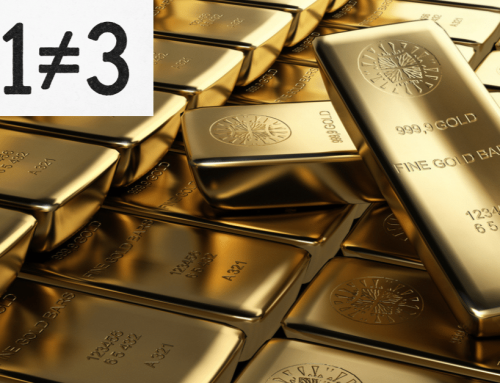In an ever-changing financial landscape, one thing remains a constant of stability amid currency debasement: gold. From the ancient Roman denarius to the modern U.S. dollar, history reveals a recurring theme—currencies lose value as governments increase money supply to fund spending, often at the expense of everyday savers.
This phenomenon, known as currency depreciation, is particularly concerning in today’s global economy. Inflation rates have surged in recent years, shrinking the purchasing power of hard-earned money. A gallon of milk or a tank of gas costs significantly more than it did just a decade ago. Savers and investors alike are asking: how can I protect the value of my wealth against this relentless erosion?
Enter gold—a timeless asset that has safeguarded purchasing power for centuries. Unlike paper currencies, gold cannot be printed or devalued by policy decisions. Its value is intrinsic, anchored by its scarcity and universal appeal.
A Historical Anchor in Stormy Seas
The historical performance of gold underscores its reliability as a store of value. In 1971, when the U.S. severed the dollar’s link to gold, an ounce of gold was worth $35. Today, that same ounce commands over $2,000, reflecting an enduring ability to preserve purchasing power.
Meanwhile, the U.S. dollar has lost more than 85% of its purchasing power since 1971. What cost $100 then now requires nearly $700. During the inflationary 1970s, gold prices surged from $35 to over $800 by 1980, a staggering 2,200% increase, while inflation averaged over 7% annually. These numbers illustrate gold’s unmatched ability to hedge against the erosion of fiat currencies.
Gold’s Modern Relevance
This dynamic isn’t just a relic of the past; it’s alive and well today. In 2022, inflation peaked above 8%—the highest in decades—leaving many portfolios vulnerable. Yet gold demonstrated resilience, maintaining its value and reinforcing its reputation as a dependable store of wealth.
Even central banks recognize gold’s importance. In 2022, they purchased a record 1,136 metric tons of gold, marking the highest annual purchase in 55 years. This unprecedented move reflects a global effort to hedge against currency risks and diversify reserves amidst mounting geopolitical uncertainty.
Gold’s scarcity is another key factor. Its stock-to-flow ratio—a measure of supply relative to demand—is 62, far outpacing fiat currencies, which can be printed at will. This finite nature reinforces gold’s value as an enduring asset, immune to the inflationary pressures that plague paper money.
Empirical Evidence of Stability
Gold’s track record in protecting wealth speaks for itself. Between 2000 and 2023, gold’s nominal price rose from $290 to over $2,000, delivering an annualized return of 6.7%. Even when adjusted for inflation, gold has outperformed cash and many fixed-income investments during this period.
The contrast with fiat currencies is equally compelling. For example, from 2020 to 2022, the U.S. Dollar Index (DXY) declined nearly 10%, while gold prices rose over 25%. This inverse relationship highlights gold’s role as a natural hedge against currency depreciation and economic volatility.
Take Control of Your Financial Future
As we navigate these uncertain times, consider how gold might fit into your financial strategy. Its role in protecting purchasing power amidst currency depreciation isn’t just a historical observation—it’s a modern necessity. By adding gold to your portfolio, you align yourself with centuries of wisdom and a proven strategy for wealth preservation.
Gold doesn’t just weather the storm; it stands as a steadfast anchor, ensuring stability in an ever-changing financial landscape.
What’s your perspective? Have you considered how gold might help protect your purchasing power in today’s economic climate?
This article is for informational purposes only and should not be considered financial advice. Consult with a financial professional to determine the best strategy for your individual circumstances.






